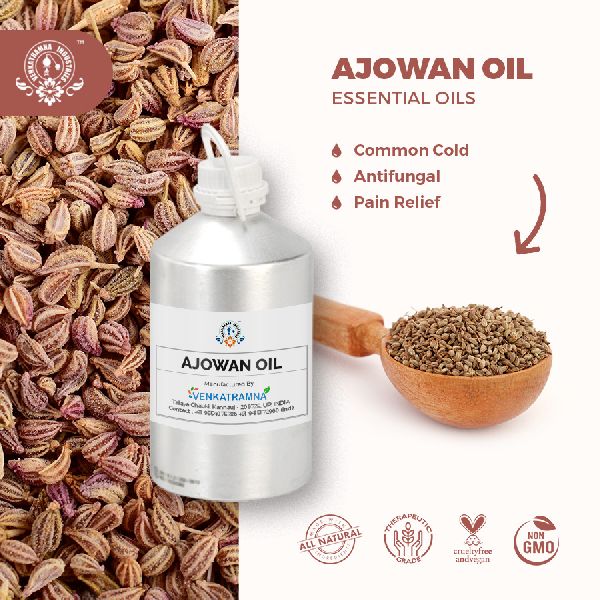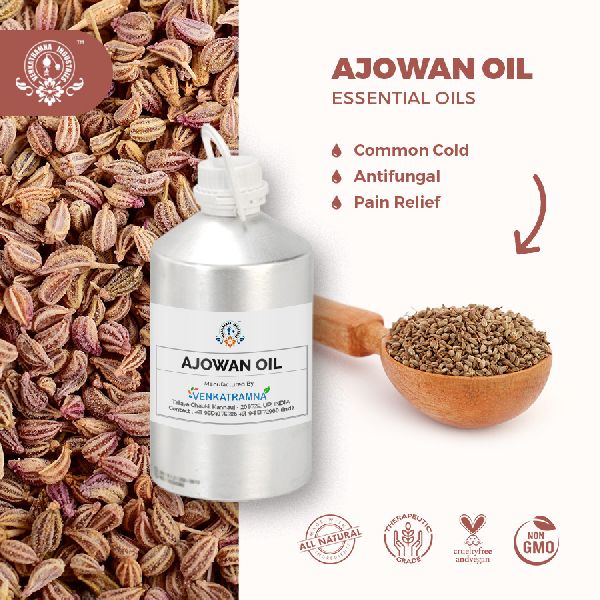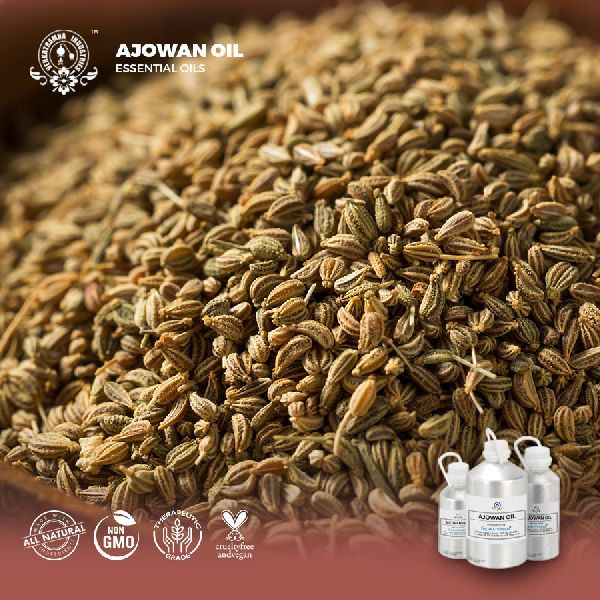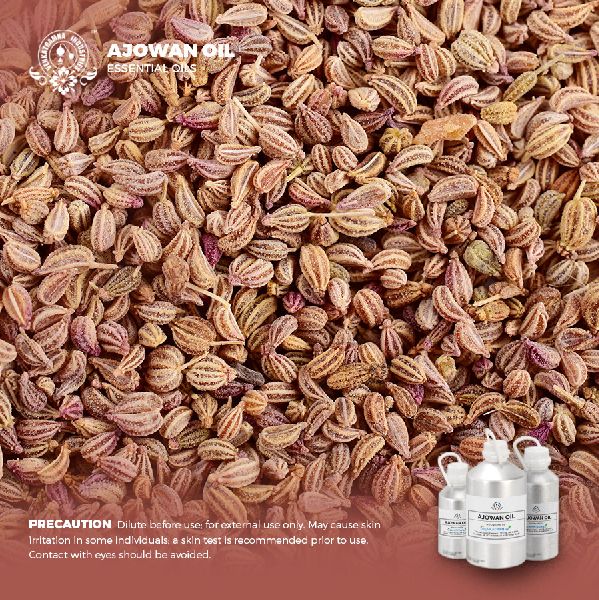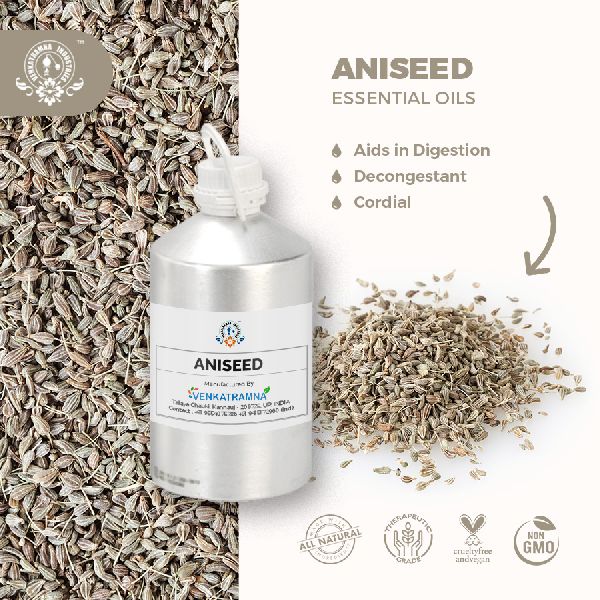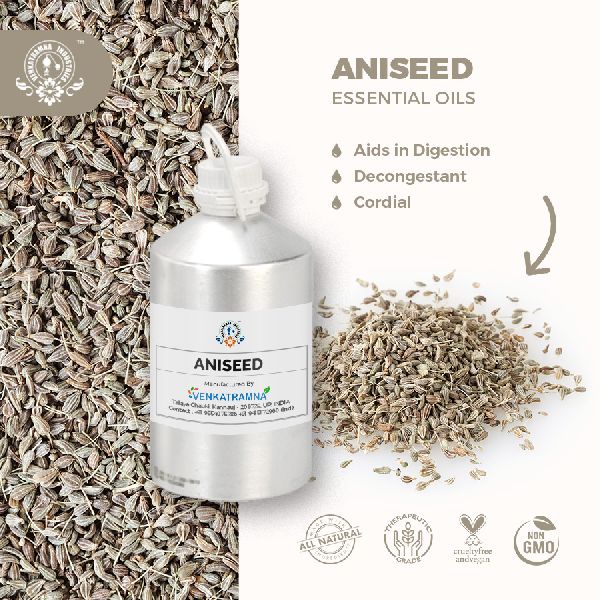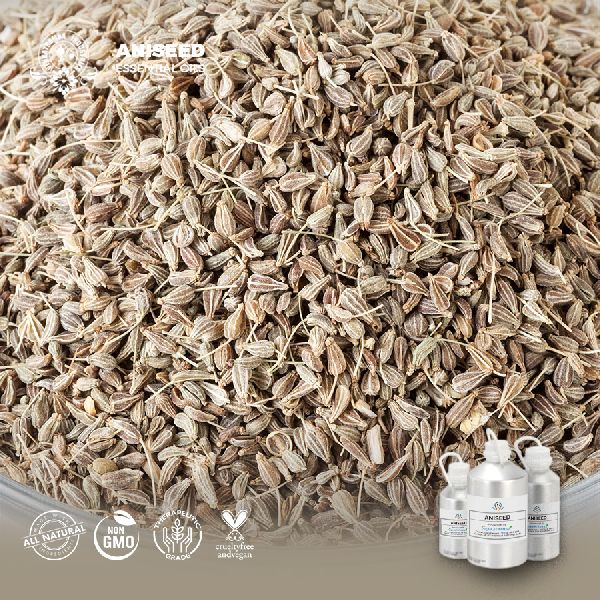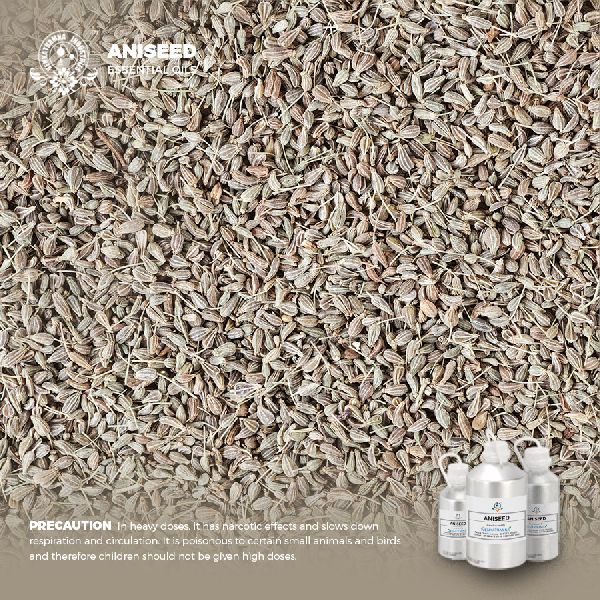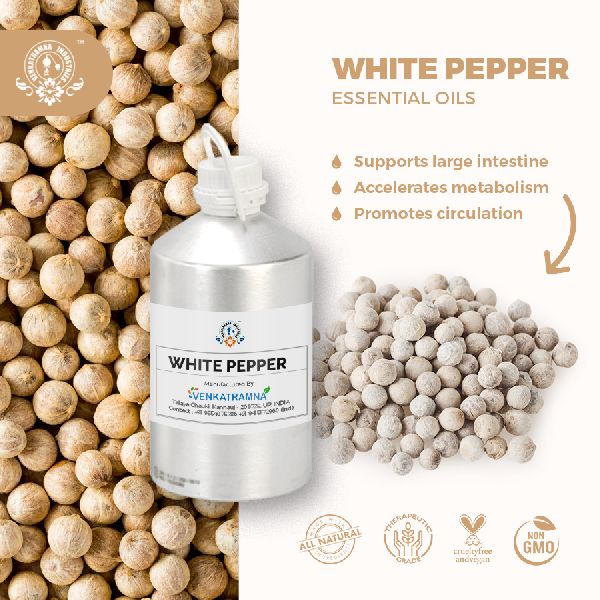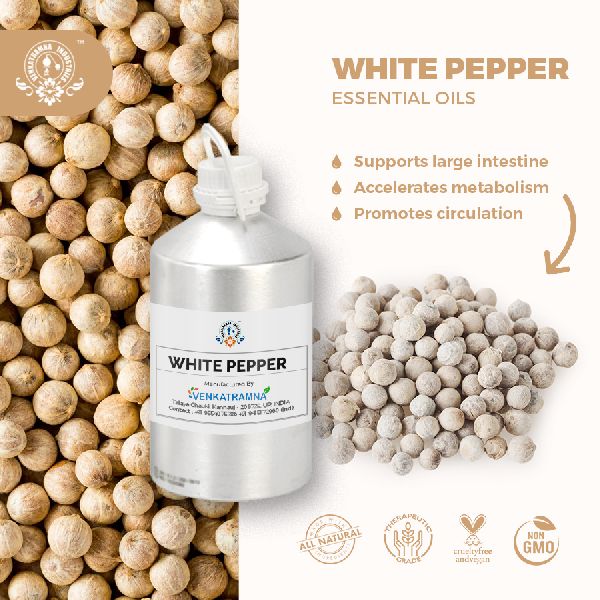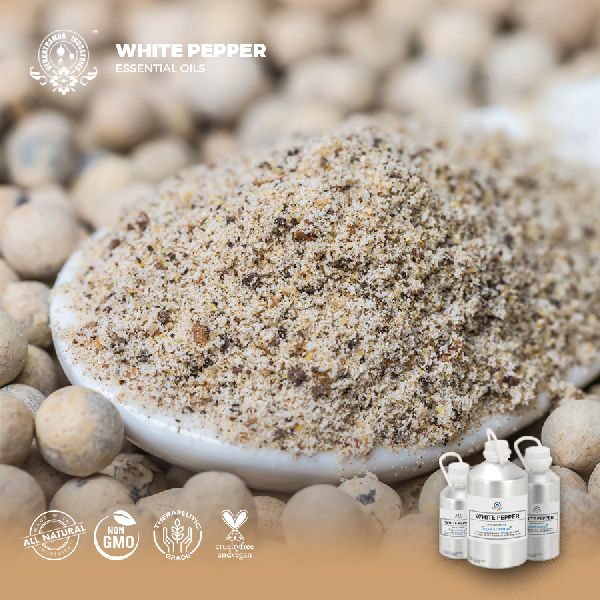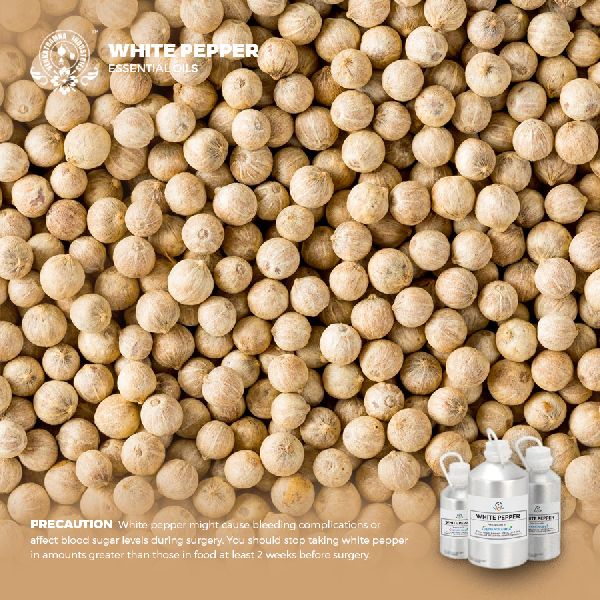Indra Nagar, Kanpur, Uttar Pradesh - GST No. 09AVOPS2676K1ZN
- Send SMS
- Send Email
Spice Oil
Leading Manufacturers, Exporters, Wholesaler and Retailer of Ajowan Oil, Aniseed Oil and White Pepper Oil from Kanpur.
| Business Type | Manufacturer, Exporter, Supplier, Retailer, Wholesaler |
| Botanical Name | Trachyspermum ammi (L.) |
| Common name | Ajwain, Ajowan |
| Plant family | Apiaceae |
| Genus | Trachyspermum |
| Appearance/color | Yellow Brown and Thin |
| Odour | Spicy, Medicinal and Strong Note |
| Blends With | Spicy, medicinal and strong note |
| Origin | India |
| Source | Seeds |
| Method of Extraction | Steam Distillation |
Preferred Buyer From
| Location | Worldwide |
Ajwain (Trachyspermum ammi L. Sprague) is an annual aromatic and herbaceous plant of the family Apiaceae. It is an erect annual herb with a striate stem and originated in the eastern regions of Persia and India. Its fruits are small, and grayish-brown in color.
Trachyspermum ammi commonly known as ‘Ajwain’ is distributed throughout India and is mostly cultivated in Gujarat and Rajasthan. The fruit possesses stimulant, antispasmodic and carminative properties and is used traditionally as an important remedial agent for flatulence, atonic dyspepsia, diarrhea, abdominal tumors, abdominal pains, piles, and bronchial problems, lack of appetite, galactogogue, asthma and amenorrhoea. Medicinally, it has been proven to possess various pharmacological activities like antifungal, antioxidant, antimicrobial, antinociceptive, cytotoxic, hypolipidemic, antihypertensive, antispasmodic, broncho-dilating actions, antilithiasis, diuretic, abortifacient, antitussive, nematicidal, anthelmintic and antifilarial.
Intended Benefits/Uses or Properties :
Ajowan is traditionally used with vegetables that can be indigestible such as cabbage, onion, cucumber, carrot, turnip and beetroot. Apart from that it has several pharmaceutical and ayurvedic properties. In India, it is widely used in Pickles since ancient times.
| Business Type | Manufacturer, Exporter, Supplier, Retailer, Wholesaler |
| Botanical Name | Pimpinella Anisum |
| Common name | Saunf, Fennel Seeds, |
| Plant family | Apiaceae |
| Genus | Pimpinella |
| Appearance/Color | Colorless to Pale yellow liquid with Licorice odor. |
| Odor | Distinctive scent of licorice, Rich and Sweet. |
| Blends With | Rose, Orange, Lavender, Spicy Essential oils |
| Origin | Egypt |
| Source | Seeds |
| Method of Extraction | Steam Distillation |
| (E)-Anethole | 95.0% |
| Estragole | 4.4% |
Preferred Buyer From
| Location | Worldwide |
Anise is a dainty, white-flowered urnbelliferous annual, about 18 inches high, with secondary feather-like leaflets of bright green, hence its name (of mediaeval origin), Pimpinella, from dipinella, or twicepinnate, in allusion to the form of the leaves.
Anise is a dainty, white-flowered urnbelliferous annual, about 18 inches high, with secondary feather-like leaflets of bright green, hence its name (of mediaeval origin), Pimpinella, from dipinella, or twicepinnate, in allusion to the form of the leaves.
Anise fruit yields on distillation from 2.5 to 3.5 per cent. of a fragrant, syrupy, volatile oil, of which anethol, present to about 90 per cent., is the principal aromatic constituent. It has a strong Anise odour and separates in the form of shining white crystalline scales on cooling the oil. Other constituents of the fruit are a fixed oil, choline, sugar and mucilage.
Intended Benefits/Uses or Properties
Aniseed is native to the Middle East and the Romans used it in little cakes that they ate at the end of their banquets. Aniseed is traditionally used with vegetables that can be indigestible such as cabbage, onion, cucumber, carrot, turnip and beetroot.. Aniseed is used to flavour many alcoholic drinks such as Pernod, Greek ouzo and mastikha, anesone from Italy and the French drink, pastis. Apart from that it have several pharmaceutical and ayurvedic properties. In India, it is widely used in Pickels since ancient times.
| Business Type | Manufacturer, Exporter, Supplier, Retailer, Wholesaler |
| Botanical Name | Piper nigrum L |
| Common name | Black pepper, White Pepper |
| Plant family | Piperaceae |
| Genus | Piper |
| Appearance/Color | Colourless or Light Coloured Clear Mobile Liquid |
| Odor | Crisp, Fresh, Peppercorn Aroma, with Spicy Woody Odor |
| Blends With | Peppermint, Clove, Wintergreen, Basil, Bergamot, Cinnamon, Lemon. |
| Origin | India |
| Source | Seed (Unriped) |
| Method of Extraction | Seed (Unriped) |
Preferred Buyer From
| Location | Worldwide |
Black pepper is native to India and is extensively cultivated there and in tropical regions. The spiciness of black pepper is due to the chemical piperine. Black pepper essential oil and its major active principle, piperine, which has the ability to enhance the digestive system and protect us against oxidative damage. The aroma of black pepper is spicy, musky, warm, and or course peppery. Its oil is mostly used as a supplement for digestive and nervous system support and wellness. For this reason, many people will use the oil as a flavouring in their cooking, just as you might with crushed black pepper.
Black pepper is native to India and is extensively cultivated there and in tropical regions. The spiciness of black pepper is due to the chemical piperine. Black pepper essential oil and its major active principle, piperine, which has the ability to enhance the digestive system and protect us against oxidative damage. The aroma of black pepper is spicy, musky, warm, and or course peppery. Its oil is mostly used as a supplement for digestive and nervous system support and wellness. For this reason, many people will use the oil as a flavouring in their cooking, just as you might with crushed black pepper.
As of 2013, Vietnam was the world’s largest producer and exporter of black peppercorns, producing 163,000 tonnes or 34%of the world total of 473,000 tones (table). Other major producers include Indonesia (19%) (table). Global pepper production may very annually according to crop management, disease and weather. Vietnam dominates the export market, using almost none of its production domestically. Peppercorns are among the most widely treaded spice in the world, accounting for 20 percent of all spice imports.

